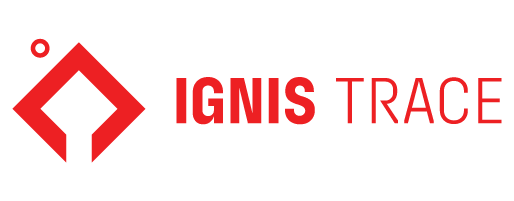Self-Regulating Heating Cables

A self-regulating heater cable is a cutting-edge heating solution designed to prevent freezing and maintain process temperatures in residential, commercial, and industrial environments. Unlike traditional heating systems, it automatically adjusts its heat output based on ambient temperature, providing efficient and safe thermal control. This intelligent adaptability makes it ideal for applications ranging from pipe freeze protection to roof and gutter de-icing. The cable increases heat when temperatures drop and reduces it as conditions warm, helping to reduce energy waste.
This technology operates without the need for complex controls or constant monitoring, offering a reliable and cost-effective solution. Whether you're protecting water lines in a home or maintaining fluid viscosity in a processing plant, self-regulating heater cables provide consistent and even heating. Their flexibility and durability allow installation in harsh conditions, including wet and corrosive environments, without compromising performance.
With the global focus shifting toward energy-efficient infrastructure, these cables stand out for their ability to optimize energy use while maintaining safety. They are also easier to install than many alternative systems, requiring less specialized knowledge and fewer components. Ultimately, a self-regulating cable system delivers long-term value through reduced energy bills, fewer maintenance needs, and extended operational life.
What is Self Regulating Heater Cable?
 A self-regulating heater cable is a type of electrical heating system that can automatically adjust its heat output in response to ambient temperature changes. This functionality is made possible through its unique conductive core, which increases or decreases electrical resistance as temperatures rise or fall. As a result, the cable delivers more heat when it’s cold and less when it’s warm—helping conserve energy and reduce operating costs. These characteristics make it particularly valuable in environments where maintaining specific temperatures is critical, such as in plumbing, roofing, and industrial pipework.
A self-regulating heater cable is a type of electrical heating system that can automatically adjust its heat output in response to ambient temperature changes. This functionality is made possible through its unique conductive core, which increases or decreases electrical resistance as temperatures rise or fall. As a result, the cable delivers more heat when it’s cold and less when it’s warm—helping conserve energy and reduce operating costs. These characteristics make it particularly valuable in environments where maintaining specific temperatures is critical, such as in plumbing, roofing, and industrial pipework.
Unlike a regulated heater cable, which may require a thermostat or external controller, self-regulating cables act independently and respond in real time to temperature fluctuations. This makes them highly effective for freeze protection and process temperature maintenance. Their modular design allows for flexible installations across various surfaces, including metallic and plastic pipes, tanks, and roofs. Thanks to their self-adjusting behavior, they also offer greater safety by minimizing the risk of overheating and electrical faults. Whether used in commercial buildings or industrial facilities, self-regulating heater cables offer both efficiency and peace of mind.
How Does Self-Regulating Heating Cable Work?
Self-regulating heating cables contain a polymer core with conductive carbon particles that expand or contract based on temperature changes. When it’s cold, the polymer contracts, allowing more current to flow and generating more heat. As it warms up, the polymer expands and reduces current flow. This intelligent functionality makes it ideal as an industrial heating cable, providing efficient, responsive thermal control.
Self-regulated Heating Cable Technical Specifications
Self-regulating heating cables are built to meet a wide range of industrial and commercial demands. At their core, they feature two parallel conductors embedded within a semi-conductive, temperature-sensitive polymer matrix. This polymer changes its electrical resistance based on ambient temperature, enabling dynamic heat regulation. The entire structure is typically encased in insulation and a durable outer jacket, which can be fluoropolymer or thermoplastic, depending on the environmental requirements. Some models also include a tinned copper braid for mechanical protection and grounding.
Key technical specifications include voltage ratings (commonly 110V, 120V, 208V, or 240V), wattage output per meter (e.g., 10W/m, 20W/m, 33W/m), and maximum exposure temperatures—often ranging up to 85°C when energized. These cables are designed to be cut-to-length on site, adding installation flexibility. Other specifications such as start-up current, minimum bend radius, and compatibility with thermal insulation also influence the product selection process. Since performance varies based on use case, the self-regulating heater cable price can differ significantly depending on required power output, length, chemical resistance, and environmental ratings.
Self-regulated Heating Cable Usage Areas
Self-regulated heating cables are used in a variety of residential, commercial, and industrial settings where freeze protection or temperature maintenance is essential. In residential applications, they are commonly installed along water pipes, gutters, and downspouts to prevent freezing during cold months. For commercial properties, they offer reliable protection in sprinkler systems, roof heating systems, and water supply lines. Their flexibility allows them to adapt to complex piping systems, making them suitable for both retrofits and new constructions.
In industrial environments, these cables play a critical role in maintaining flow in chemical, oil, gas, and food processing lines. They can also be used to prevent ice buildup in loading bays, conveyors, or exterior staircases. The durable construction of a heater cable ensures it performs well in extreme weather conditions and hazardous areas. Because they can be installed in wet, corrosive, or even explosive environments (when properly certified), self-regulating cables offer one of the most versatile solutions available for thermal management.
Self-regulated Heating Cable Assembly and Installation Process
 Installing self-regulated heating cables is a straightforward process when performed according to manufacturer guidelines. The first step involves determining the pipe or surface length that requires heating, followed by cutting the cable to the appropriate size—thanks to its cut-to-length capability. The cable is then attached along the pipe or surface using aluminum or fiberglass tape. Care is taken to avoid overlapping the cable, which could cause localized overheating even with a self-regulating system.
Installing self-regulated heating cables is a straightforward process when performed according to manufacturer guidelines. The first step involves determining the pipe or surface length that requires heating, followed by cutting the cable to the appropriate size—thanks to its cut-to-length capability. The cable is then attached along the pipe or surface using aluminum or fiberglass tape. Care is taken to avoid overlapping the cable, which could cause localized overheating even with a self-regulating system.
Once the cable is secured, electrical connections are made using end seals and connection kits provided by the manufacturer. A thermostat may be included, especially in systems where energy savings are a top priority. Finally, thermal insulation is applied over the installation to improve efficiency and minimize heat loss. The cable should then be tested to confirm resistance levels and overall performance. Professional installation is always recommended for industrial environments or large-scale systems to ensure long-term safety and reliability.
How to Calculate Self-regulated Heating Cable Length?
To calculate the required length of a self-regulated heating cable, start by measuring the total length of the pipes or surfaces to be heated. Then factor in the number of valves, fittings, and any overlaps needed for vertical or horizontal runs. Add a percentage for connection leads and safety margin. Using manufacturer-specific guidelines ensures precise, energy-efficient cable sizing.
Compatible Accessories for Self-Regulating Heating Cable
Compatible accessories for self-regulating heating cables include power connection kits, end seals, inline splice kits, aluminum fixing tape, thermostats, and control panels. These components ensure safe installation, effective heat regulation, and long-term performance. Using certified accessories from the same manufacturer helps maintain product warranties and electrical compliance. Proper accessories also enhance durability, especially in outdoor or chemically exposed environments.
Advantages of Using Self-Regulating Heating Cable
Self-regulating heating cables provide a smart, energy-efficient solution to temperature maintenance and freeze protection. One of the most significant advantages is their automatic heat adjustment based on ambient temperature, which greatly reduces electricity consumption compared to constant wattage systems. This means they operate only when needed, helping lower utility bills while extending the life of the cable. Additionally, the self-regulating design prevents overheating, eliminating the risk of thermal damage to pipes, roofs, or other surfaces.
These cables also offer excellent flexibility in both application and installation. They can be cut to length on-site without affecting performance, making them ideal for irregular or complex layouts. Their compatibility with a wide range of surfaces and environments—indoors or outdoors, wet or dry—ensures reliability in diverse settings. Combined with minimal maintenance requirements and robust safety features, self-regulating cables deliver long-term value for residential, commercial, and industrial users alike.
Get Technical Support and Quotation for Self-Regulating Heating Cable
Selecting the right self-regulating heating cable for your specific application can significantly improve system performance and energy efficiency. That’s why it’s essential to consult with professionals who understand the full technical scope—such as voltage, wattage output, environmental exposure, and control requirements. Whether you're planning a small residential project or a large industrial system, expert guidance ensures that the solution is safe, reliable, and compliant with relevant standards.
Manufacturers and authorized distributors typically offer technical support to help with system design, cable selection, and installation planning. You can also request a personalized quotation based on your project’s unique requirements—such as cable length, accessories, environmental conditions, and timeline. Getting a detailed quote helps you budget accurately and compare solutions effectively. Working with a trusted supplier also ensures access to documentation, compliance certifications, and long-term support for your heating system.

 Türkçe
Türkçe





